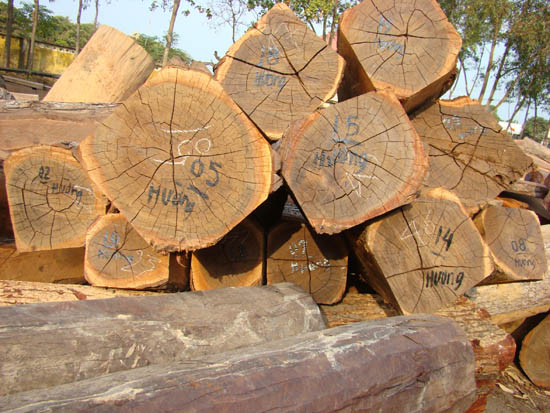Beijing, once among the most polluted cities globally, has significantly improved its air quality over the past two decades, with its experience possibly providing Hanoi with valuable insights into the severe air pollution that the Vietnamese capital is enduring.

Vietnam’s Management of Forest Products: Such as Child Abandonment
If forests generally and forest products particularly are seen as a property; then its owners need at least balance between “protection” and “utilization”. However, in this reason, the management of the State of Vietnam on forests has not been to do so!
The saying “gold forest, silver sea” (forest is precious and regarded as gold-mine, sea is precious and reagarded as silver-mine) is well enough for us to recognise the value in forests with plants, animals etc. that make up the system of renewable resources; the infinite economic, environmental and social value.
However, for many decades, the State seems to think of protecting the properties rather than thinking of that: proper utilization is the most effective way to protect the forests.
The role of forest products: such good a son in a family
Without any cites, anyone can recognize roles of forest products with economic, environmental and social value.
It is true that “gold forest” when nowsway days, there are about 1.6 billion people (more than 20% of the world population) who depend on forest products. This measurement is publicly announced by the United Nations Environment Programme (UNEP) recently.
In countries around the world such as India and Brazil, over 50% of their foreign currency earned from withdrawing and processing of native non-timber forest products (NTFPs), researchers said, citing data from ealier studies. Or in the US, more than 25% of prescriptions used preparations obtained from the trees; and 80% of Laos people live in rural mountain areas based on forest resources, which are mainly NTFPs.
In Vietnam, every 5 years, the demand for industrial wood such as particle board, furniture etc. is 2 million cubic metres in increase – according to the 2007 study of Dr. Marko Katila (Senior Advisor on Economy, Ministry of Foreign Affairs of Finland).
Or more simply, everyday, products related to forest sources such as tables, chairs, cabinets etc. occur everywhere.
The long-run value of forest: are not properly concerned
Thoughts of the Politburo of the Communist Party
It is started with the resolutions of the Central Party to the Constitution and law. These driving policies have not adequately addressed the importance of forestry and forest use.
Although resolutions of every national congress of the Communist Party of Vietnam embraces the environment, forests etc. they do not have a certain thematic instruments for the management of exploiting, processing and consumption of forest products. For example, in the last 10 years, with forestry issues in general, the Party Central Committee has focused on an only one topic through two resolutions – on land and forest land allocation (under the resolutions: No. 28 -NQ/TW in 2003 and No. 30-NQ/TW 2003 recently announced).

Over the last 50 years, three times in changes of the forest law have not mentioned properly roles of forest utilization. Even the name makes it clear that we have affordable overlooked issues of “forest utilization” – forest products. The Ordinance year 1992 stating only “regulations on forest protection”; the Law 1991 and the Law 2004 only refering to “Forest Protection and Development”.
Obviously, just look at the forests as an asset, then the owner needs at least balance between “protection” and “utilization”.
Implemented by the Government
As a result of the idealism, institutional systems and state-run policies for “forest utilization” have been overlooked.
If partly institutional systems are seen as the sense of “hardware components”, then the “hardware” is also problematic. According to preliminary statistics of recent authors, in the forestry sector, only 0.8% of the total devisions of the country have been specialized functions related to forest products sector. Similarly, the number of responsible staffs is just only 5.4%.
Despite the fact that, the function for “forest utilization” have been spreaded within many other devisions, but this is a mean of “cum role”; showing lack of recognitions of natural values of the good son in the forest sector family.
Wether policy implication has been more profound? Recently, the statistical data collected by the author of this article shows that policies on withdrawing, processing and consuming forest products are really shocking.
In the most recent 25 years, while just only 12.3% issued decrees, the government’s strategies are related to forest products, and the rest are mostly related to the field of “forest protection and development”. Similarly, the figure at the ministerial level (circulars, guides etc.) is only 11.4%.
Evidences in practice
Firstly, recent official data are also very significant. A contrast ratio of more than 70% of the population living depend on the forests, the forestry sector GDP accounted for only about 1% of GDP in the whole economy. This figure is mentioned in the National Forestry Strategy 2006 – 2020 (published by the Decision No. 18/2007/Q?-TTg, dated 05/02/2007).
Though the number of forest processing enterprises is huge, abilities of these enterprises is very “sketchy”. According to a recent reflection, up to 50% of forest products processing factories have simple equipments; and 80% of firms distributed in unreasonable region – are concentrated in the southern provinces and a few forest areas. Also, in 2013, in the “Top 20 largest enterprises in Vietnam agriculture, forest products” there is only one enterprise in the field of forestry – stated by the Ministry of Industry and Trade.
Secondly, some assessments recently also make us worry. The under-going Deputy Director General of the General Forestry Administration, Mr. Vo Dai Hai said that the overseas export management “without representation” should be disadvantaged – reflected on Agroviet Newspaper, dated 01/4/2014.
“… management of illegal harvesting forest products in Vietnam has not been catched up with the reality…”, said Dr. Hugesh Ross, from the World Bank, recorded at the Round Table Conference between the European Commission to Vietnam male, dated 04/10/2014.
Thus, it is not difficult to explain when we have recently witnessed as facts appearing on media such as: “Environmental pollution from wood processing” (published on 12.03.2014 on Thanh Hoa Newspaper); “Exports extorted, return domestic furniture” (1/11/2013 Times on Bank) etc.
In contrast to the inadequacies in forest management, real progress made very positive what belongs to the essence of it.
For example, recent survey results show that there are up to 3.900 wood processing enterprises and thousands of forest product processing factories in various forms of ownership. Indeed, this is a huge number.
Or the data reported by the Ministry of Trade and Industry in 2012 shows that Vietnamese wood products were now present in 120 countries and territories around the world, with the EU, US and Japan leading markets.
Instead of a conclusion
Obviously, the above arguements have posed to us that we must recognize and deserve attention to the management of exploiting, processing and consumption of forest products. This is significant as putting good son with abandonment and lack of attention back to the family.
To ensure feasibilities of the suggestion, designed solutions should follow bottom-up approach, with the institutional changes and implementing policies first. This is also because of that the under-going resolutions of the Central Party Committee and the under-going forestry law have created proper room for enforcements of the Government.
The under-going revolution is more meaningful when the Central Government and the Agricultural and Rural Development Sector have recently had two projects relative to restructuring. The objective of the restructuring – “raise value added”, “revolution” will be guaranteed only if the State redefines “forest utilization” as its natural roles.
By Tran Van Viet
Mr. Tran Van Viet is a technical officer of the Agricultural and Rural Division under the Economic Commission of the Party’s Central Committee (PCC). The author’s writing reflects his own opinions and does not necessarily reflect the opinion of PanNature or the organization he’s working with.



